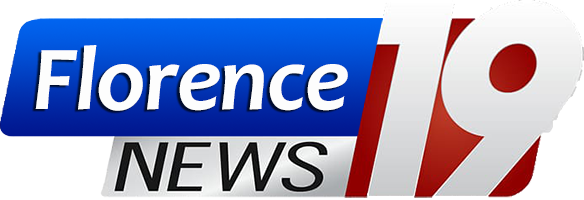In the fast-paced world of digital marketing, staying organized is key to achieving success. One of the most effective tools for maintaining this organization is a content calendar. Whether you’re managing a blog, social media channels, or an entire marketing campaign, a content calendar helps streamline your efforts, ensuring that you remain consistent and strategic in your content creation. But what exactly is a content calendar, and why is it so crucial? Let’s delve into the details and explore five free templates that can make your content planning more efficient.
Understanding a Content Calendar
A content calendar is essentially a planning tool used to schedule and manage content creation and publication. It helps you organize your content strategy by outlining what content will be produced, when it will be published, and where it will appear. This tool is crucial for both individuals and teams, offering a visual representation of your content schedule that helps ensure consistency and timely delivery.
The benefits of using a content calendar are manifold. For one, it helps you maintain a steady stream of content, which is vital for keeping your audience engaged and driving traffic to your platforms. Additionally, it enables you to plan content around important dates, events, or campaigns, ensuring that your content is relevant and timely. Moreover, a content calendar provides a framework for collaboration, allowing team members to see who is responsible for what, and helping to avoid duplication of efforts or missed deadlines.
Key Components of a Content Calendar
To maximize the effectiveness of a content calendar, it’s important to understand its key components. Typically, a content calendar includes the following elements:
Content Title/Description: This is a brief summary or title of the content that will be created. It helps you quickly identify what each piece of content is about.
Publication Date: This specifies when the content will go live. Having a clear timeline helps you manage deadlines and ensures that content is published on schedule.
Content Format: Whether it’s a blog post, social media update, video, or infographic, identifying the format helps in resource allocation and planning.
Platform: This indicates where the content will be published, such as a blog, Facebook, Twitter, LinkedIn, etc.
Status: Tracking the status of each piece of content (e.g., draft, in review, scheduled, published) helps keep the process organized and ensures nothing falls through the cracks.
Assigned To: If you’re working with a team, assigning tasks to specific team members helps in managing responsibilities and accountability.
Keywords/SEO: For digital content, including relevant keywords or SEO tags can help in optimizing content for search engines.
Metrics/Goals: Setting measurable goals and tracking performance metrics ensures that your content strategy aligns with your overall marketing objectives.
Why You Need a Content Calendar
A content calendar is more than just a scheduling tool; it’s a strategic asset that offers numerous advantages. Here are some compelling reasons why incorporating a content calendar into your workflow is essential:
Enhanced Organization: A content calendar helps you keep track of what needs to be created, when it’s due, and where it should be published. This organization reduces the stress of last-minute content creation and ensures a more systematic approach.
Consistency: Regular content posting is crucial for audience engagement and retention. A content calendar helps you plan content in advance, ensuring that you maintain a consistent posting schedule and avoid periods of inactivity.
Strategic Planning: With a content calendar, you can plan content around key dates, events, and seasonal trends. This strategic approach allows you to create relevant and timely content that resonates with your audience.
Improved Collaboration: For teams, a content calendar fosters better communication and collaboration. Team members can see what others are working on, preventing duplication of efforts and ensuring that deadlines are met.
Performance Tracking: By incorporating metrics and goals into your content calendar, you can monitor the performance of your content and make data-driven decisions to optimize your strategy.
Five Free Content Calendar Templates
To help you get started, here are five free content calendar templates that you can download and customize according to your needs:
Google Sheets Content Calendar Template
- Description: This template offers a simple, customizable format that you can easily adapt to your content needs. With built-in columns for content title, publication date, status, and assigned team member, it’s perfect for both individuals and teams.
- Download Link: Google Sheets Content Calendar Template
Trello Content Calendar Board
- Description: Trello provides a visual and interactive content calendar using boards, lists, and cards. This template allows you to track content creation stages, assign tasks, and collaborate with team members in real-time.
- Download Link: Trello Content Calendar Board
Excel Content Calendar Template
- Description: For those who prefer using Excel, this template offers a detailed content calendar with sections for content type, publication date, and performance
metrics. It’s designed for those who need a more structured and spreadsheet-based approach to content planning.
- Download Link: Excel Content Calendar Template
Asana Content Calendar Template
- Description: Asana’s template integrates seamlessly with their project management tool, offering a detailed content calendar with tasks, due dates, and progress tracking. It’s ideal for teams looking to manage content within a larger project framework.
- Download Link: Asana Content Calendar Template
Airtable Content Calendar Template
- Description: Airtable combines the functionality of a spreadsheet with the flexibility of a database. This content calendar template provides customizable views and fields, allowing you to track and manage your content across various dimensions.
- Download Link: Airtable Content Calendar Template
How to Use Content Calendar Templates
Using a content calendar template effectively involves more than just filling in dates and content titles. Here’s a step-by-step guide to get the most out of your chosen template:
Define Your Goals: Before you start populating your calendar, clarify your content goals. Are you aiming to drive traffic, increase engagement, or promote a product? Setting clear objectives will help guide your content strategy.
Plan Content Types: Decide on the types of content you’ll be producing. This could include blog posts, social media updates, newsletters, videos, etc. Make sure your calendar reflects this diversity to keep your content strategy well-rounded.
Assign Responsibilities: If you’re working with a team, assign tasks to specific individuals. Clearly indicate who is responsible for each piece of content, including writing, editing, and publishing.
Set Deadlines: Establish realistic deadlines for each content piece. This helps in managing time efficiently and ensures that content is produced and published on schedule.
Monitor Performance: Track the performance of your content using the metrics section of your calendar. Regularly review these metrics to assess what’s working and where adjustments are needed.
Adjust and Iterate: A content calendar is not a static document. Continuously adjust your calendar based on performance data, feedback, and changing priorities. This iterative approach helps in refining your content strategy over time.
A content calendar is an indispensable tool for anyone serious about managing and optimizing their content strategy. It provides structure, promotes consistency, and enhances collaboration, all of which contribute to a more effective and organized content creation process. By using one of the free templates provided, you can start harnessing the power of a content calendar to streamline your efforts and achieve your marketing goals. Whether you’re an individual content creator or part of a larger team, integrating a content calendar into your workflow will undoubtedly lead to more successful and strategically aligned content initiatives.
Frequently Asked Questions (FAQs)
1. What is a content calendar? A content calendar is a planning tool used to schedule and manage the creation and publication of content. It helps organize content strategy by outlining what content will be produced, when it will be published, and where it will appear. This tool ensures consistency and timeliness in content delivery.
2. Why should I use a content calendar? Using a content calendar provides several benefits, including enhanced organization, consistent posting, strategic planning around important dates, improved team collaboration, and the ability to track content performance. It helps streamline the content creation process and ensures that your content is aligned with your overall marketing goals.
3. What are the key components of a content calendar? Key components of a content calendar include:
- Content Title/Description
- Publication Date
- Content Format
- Platform
- Status (e.g., draft, in review, scheduled, published)
- Assigned To
- Keywords/SEO
- Metrics/Goals
4. How can a content calendar improve team collaboration? A content calendar improves team collaboration by providing a clear overview of what content is being worked on, who is responsible for each piece, and the status of each task. This transparency helps prevent duplication of efforts, ensures deadlines are met, and fosters better communication among team members.
5. Can I use a content calendar for different types of content? Yes, a content calendar can be used for various types of content, including blog posts, social media updates, videos, newsletters, and more. The flexibility of a content calendar allows you to plan and manage different content formats effectively.
6. How do I choose the right content calendar template? Choose a content calendar template based on your specific needs and preferences. Consider factors such as the size of your team, the types of content you produce, and your preferred tools (e.g., Google Sheets, Trello, Excel). Each template offers different features and customization options to fit various workflows.
7. Where can I find free content calendar templates? You can find free content calendar templates from various sources. Here are five options:
- Google Sheets Content Calendar Template
- Trello Content Calendar Board
- Excel Content Calendar Template
- Asana Content Calendar Template
- Airtable Content Calendar Template
8. How do I effectively use a content calendar template? To effectively use a content calendar template:
- Define your content goals.
- Plan the types of content you’ll produce.
- Assign responsibilities to team members.
- Set realistic deadlines.
- Monitor content performance.
- Adjust and iterate based on feedback and performance data.
9. Can a content calendar help with SEO? Yes, a content calendar can help with SEO by allowing you to plan and schedule content around relevant keywords and SEO strategies. Including SEO-related columns in your calendar helps ensure that your content is optimized for search engines and aligns with your SEO goals.
10. How often should I update my content calendar? You should update your content calendar regularly to reflect any changes in your content strategy, deadlines, or team responsibilities. Regular updates ensure that your calendar remains accurate and relevant, helping you stay on track with your content goals.
Get in Touch
Website – https://www.webinfomatrix.com
Mobile - +91 9212306116
Whatsapp – https://call.whatsapp.com/voice/9rqVJyqSNMhpdFkKPZGYKj
Skype – shalabh.mishra
Telegram – shalabhmishra
Email - info@webinfomatrix.com

%20(1).jpg)
.jpg)









 English (US) ·
English (US) ·